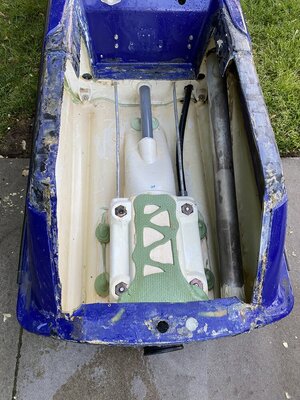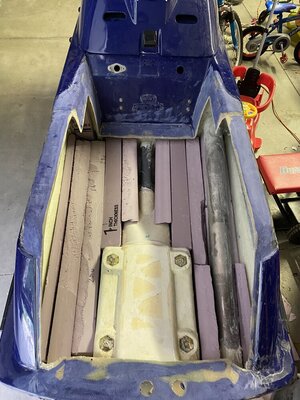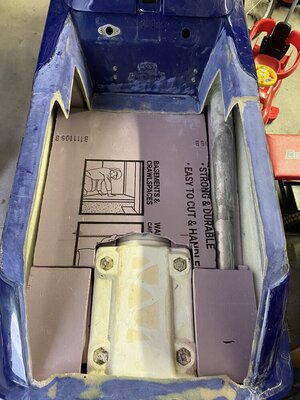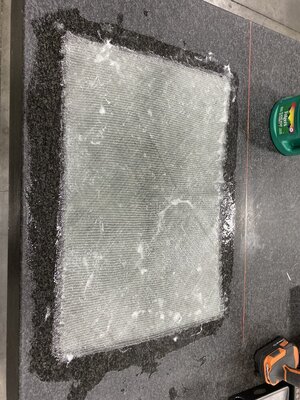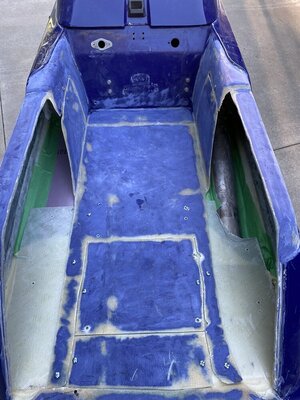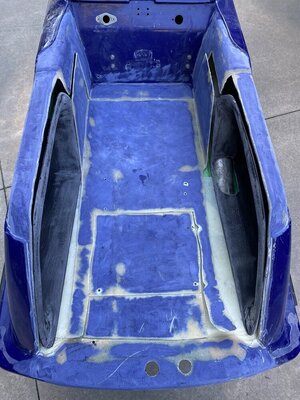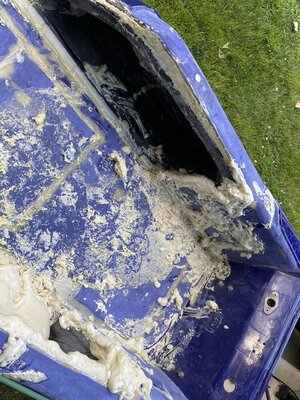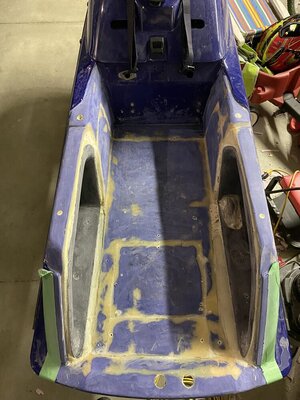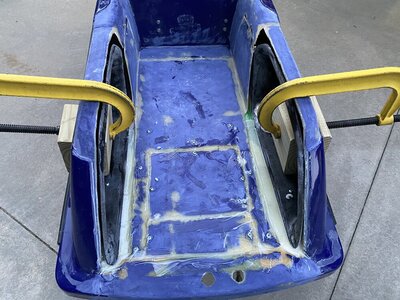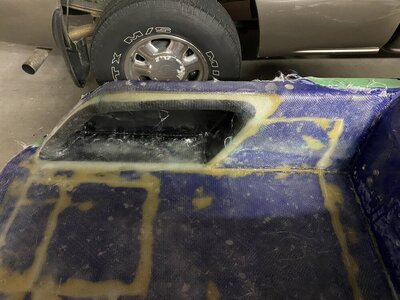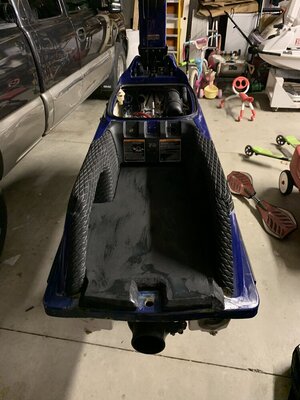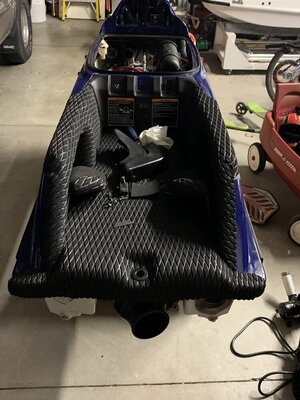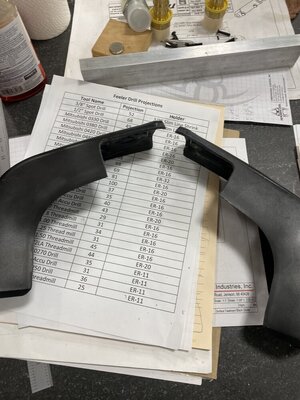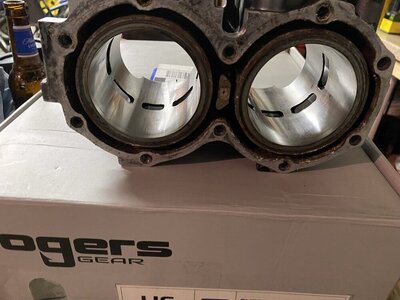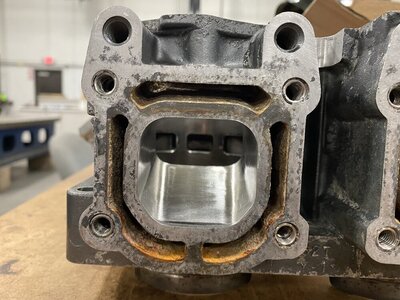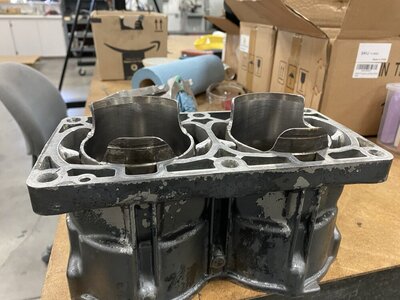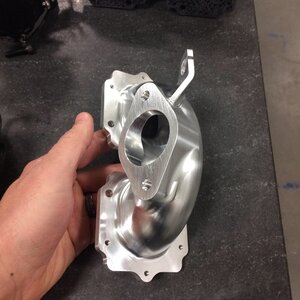jbex4ford
Certified YouTube Mechanic
- Location
- West Michigan
I’ve been wanting to do a write up on my latest project that I just finished a couple of weeks ago. I have a 2011 superjet that I installed RRP adjustable footholds in it. I ended up defoaming and refoaming my tray as well. Along with this, I also bought a Zeeltronics Y62T CDI for it last fall when they became available. I purchased my CDI from Paul at LPW, can't say enough good things about him. My superjet has a 62T cylinder with a factory limited pipe on it, but it just didn't have the lower end snap that I was looking for. After talking to Paul on the phone, he gave me a couple of suggestion for my motor on how to gain some low end performance that I knew that I could do myself being a machinist. I ported it myself with yamanube's porting templates before I ever talked to Paul, but more on all of this later.
So back to my hull, I suspected that my foam in the tray was water logged, being that the back of my ski always felt heavy. When I started to remove my old footholds, my suspicions was confirmed, that the foam was water logged. I ordered a set of RRP adjustable footholds from Riva in the middle of summer last year (2021). Riva called me in April and told me that my footholds were finally in stock after being on back order for quite sometime. After doing a quit a bit of research and find a couple of good threads that some different member's write up's on them, I wanted to do the same.
I found this tread to be very handy https://www.x-h2o.com/threads/superjet-defoam-and-rrp-adjustable-foot-hold-install.188830/
Just like Brett point out in his post, I didn’t receive any instructions with my footholds either. I’ll point out mistakes that I made, and hopefully others can learn from my mistakes. I started on the Friday of Memorial Day weekend removing my old turf and started cutting the new box’s in. Even though that I received my footholds in April, I wanted to wait until I was sure that I had everything that I was going to need to finish the job, fiberglass, resin, underpad, new turf. I glassed in my new footholds with some 1708 biax, and cover it with some 8oz twill. I have to thanks Schicks for helping me on what fiberglass he uses when he glasses footholds in. I also used thickened epoxied to adhere the RRP boxes, that come in the set to the inside walls of the gunwales.
Here's a picture of my tray before I started removing the old turf, and when I started removing the turf. I started with cutting my left foothold first. When I laid out my cut lines for installing my new footholds, one problem that I ran into was that when I cut away my old footholds, I cut a little farther into the bottom of my tray than what I needed to. As you can see from the picture. I ended up doing the same thing on the right side as well, but just more inboard. Being that I this is the 1st superjet tray that I have cut apart, I wanted to make sure that I stayed away from the exhaust tube.. Knowing what I know now, I could have easily cut straight down from the radius of the inside of the tray, and I would not hit the exhaust tube. I cut out the the rest of my tray 2" from the top and 2" from the front. I cut around the pump tunnel, but after doing that I ended up cutting out that piece as well.
So back to my hull, I suspected that my foam in the tray was water logged, being that the back of my ski always felt heavy. When I started to remove my old footholds, my suspicions was confirmed, that the foam was water logged. I ordered a set of RRP adjustable footholds from Riva in the middle of summer last year (2021). Riva called me in April and told me that my footholds were finally in stock after being on back order for quite sometime. After doing a quit a bit of research and find a couple of good threads that some different member's write up's on them, I wanted to do the same.
I found this tread to be very handy https://www.x-h2o.com/threads/superjet-defoam-and-rrp-adjustable-foot-hold-install.188830/
Just like Brett point out in his post, I didn’t receive any instructions with my footholds either. I’ll point out mistakes that I made, and hopefully others can learn from my mistakes. I started on the Friday of Memorial Day weekend removing my old turf and started cutting the new box’s in. Even though that I received my footholds in April, I wanted to wait until I was sure that I had everything that I was going to need to finish the job, fiberglass, resin, underpad, new turf. I glassed in my new footholds with some 1708 biax, and cover it with some 8oz twill. I have to thanks Schicks for helping me on what fiberglass he uses when he glasses footholds in. I also used thickened epoxied to adhere the RRP boxes, that come in the set to the inside walls of the gunwales.
Here's a picture of my tray before I started removing the old turf, and when I started removing the turf. I started with cutting my left foothold first. When I laid out my cut lines for installing my new footholds, one problem that I ran into was that when I cut away my old footholds, I cut a little farther into the bottom of my tray than what I needed to. As you can see from the picture. I ended up doing the same thing on the right side as well, but just more inboard. Being that I this is the 1st superjet tray that I have cut apart, I wanted to make sure that I stayed away from the exhaust tube.. Knowing what I know now, I could have easily cut straight down from the radius of the inside of the tray, and I would not hit the exhaust tube. I cut out the the rest of my tray 2" from the top and 2" from the front. I cut around the pump tunnel, but after doing that I ended up cutting out that piece as well.
Attachments
-
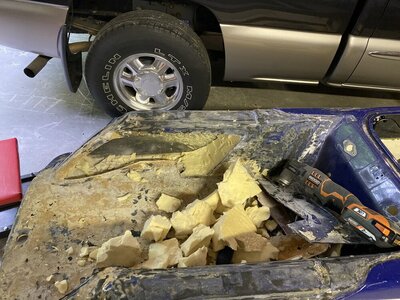 67535878958__5AF43A26-2692-48EC-82D4-1EA10DAAC9C6.JPEG191.3 KB · Views: 92
67535878958__5AF43A26-2692-48EC-82D4-1EA10DAAC9C6.JPEG191.3 KB · Views: 92 -
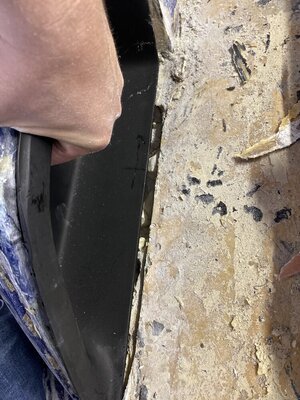 67536051751__DA5C216D-4523-4B38-963A-58FE4205874E.JPEG201.1 KB · Views: 80
67536051751__DA5C216D-4523-4B38-963A-58FE4205874E.JPEG201.1 KB · Views: 80 -
 IMG_9263.JPEG221.2 KB · Views: 66
IMG_9263.JPEG221.2 KB · Views: 66 -
 IMG_9257.JPEG201.2 KB · Views: 68
IMG_9257.JPEG201.2 KB · Views: 68 -
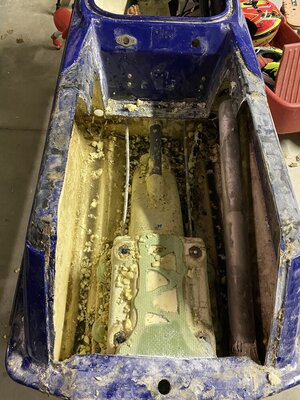 IMG_9261.JPEG212.7 KB · Views: 72
IMG_9261.JPEG212.7 KB · Views: 72 -
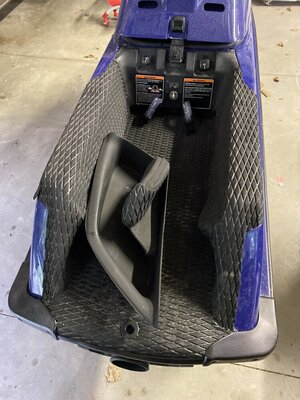 67535234108__891D84E1-A309-4381-A449-29BE179F3D2C.JPEG164 KB · Views: 77
67535234108__891D84E1-A309-4381-A449-29BE179F3D2C.JPEG164 KB · Views: 77

